《山海经》是中国志怪古籍,大体是战国中后期到汉代初中期的楚国或巴蜀人所作。也是一部荒诞不经的奇书。该书作者不详,古人认为该书是“战国好奇之士取《穆王传》 , 杂录《庄》 、 《列》 、 《离骚》 、 《周书》 、 《晋乘》以成者” 。现代学者也均认为成书并非一时,作者亦非一人。《山海经》全书现存18篇,其余篇章内容早佚。原共22篇约32650字。共藏山经5篇、海外经4篇、海内经5篇、大荒经4篇。《汉书·艺文志》作13篇,未把晚出的大荒经和海内经计算在内。山海经内容主要是民间传说中的地理知识,包括山川、道里、民族、物产、药物、祭祀、巫医等。保存了包括夸父逐日、女娲补天、精卫填海、大禹治水等不少脍炙人口的远古神话传说和寓言故事。《山海经》具有非凡的文献价值,对中国古代历史、地理、文化、中外交通、民俗、神话等的研究,均有参考,其中的矿物记录,更是世界上最早的有关文献。《山海经》版本复杂,现可见最早版本为晋郭璞《山海经传》。但《山海经》的书名《史记》便有提及,最早收录书目的是《汉书·艺文志》。至于其真正作者,前人有认为是禹、伯益、夷坚,经西汉刘向、刘歆编校,才形成传世书籍,现多认为,具体成书年代及作者已无从确证。对于《山海经》的内容性质,古今学者有着不同的认识,如司马迁直言其内容过于荒诞无稽,所以作史时不敢以为参考,如鲁迅认为“巫觋、方士之书”。现大多数学者认为,《山海经》是一部早期有价值的地理著作。郭璞(276年—324年),字景纯,河东郡闻喜县(今山西省闻喜县)人,建平太守郭瑗之子,两晋时期著名文学家、训诂学家、风水学者,好古文、奇字,精天文、历算、卜筮,擅诗赋,是游仙诗的祖师。郭璞除家传易学外,还承袭了道教的术数学,是两晋时代最著名的方术士,传说他擅长预卜先知和诸多奇异的方术。西晋末为宣城太守殷祐参军,晋元帝拜著作佐郎,与王隐共撰《晋史》,后为王敦记室参军,以卜筮不吉阻敦谋反,被杀,后追赠弘农太守,宋徽宗时被追封为闻喜伯,元顺帝时被追封为灵应侯。郭璞为正统的正一道教徒,长于赋文,尤以“游仙诗”名重当世。《诗品》称其“始变永嘉平淡之体,故称中兴第一”,《文心雕龙》也说:“景纯仙篇,挺拔而俊矣”。曾为《尔雅》、《方言》、《山海经》、《穆天子传》、《葬经》作注,传于世,明人有辑本《郭弘农集》。
“The Classic of Mountains and Seas” is an ancient book of Chinese supernatural tales, written by the people of Chu or Bashu from the middle and late Warring States Period to the middle school of the Han Dynasty. It is also a fantastic book. The author of the book is unknown, and the ancients believed that the book was “the work of the curious people in the Warring States Period who took the Biography of King Mu and miscellated Zhuang, Lie, Lisao, Zhou Shu and Jin Cheng”. Modern scholars also believe that the book is not written for a time, and the author is not alone. There are 18 chapters in the whole book of “The Book of Mountains and Seas”, and the rest are lost early. The original 22 articles were about 32650 words. There are five Tibetan classics, four overseas classics, five domestic classics, and four famine classics. There are 13 articles in the Han Shu · Art and Literature Records, which do not include the late Da Huang Jing and Hai Nei Jing. The contents of the Book of Mountains and Seas are mainly geographical knowledge in folklore, including mountains, rivers, roads, nationalities, products, medicines, sacrifices, witchcraft, etc. It has preserved many well-known ancient myths, legends and fables, including Kuafu Chasing the Sun, Nuwa Repairing the Sky, Jingwei Reclaiming the Sea, Dayu Controlling the Flood and so on. The “Book of Mountains and Seas” has extraordinary documentary value, and has reference to the study of ancient Chinese history, geography, culture, Chinese and foreign transportation, folk customs, myths, etc. The mineral records in it are the earliest relevant documents in the world. The version of “The Book of Mountains and Seas” is complex. Now we can see that the earliest version is “The Book of Mountains and Seas” by Guo Pu of Jin Dynasty. However, the title of “The Book of Mountains and Seas” is mentioned in “Historical Records”, and the earliest purpose of the book is “The Book of Han Dynasty · Art and Literature Records”. As for its true author, the predecessors believed that Yu, Boyi and Yijian had formed a book handed down after being edited and proofread by Liu Xiang and Liu Xin in the Western Han Dynasty. Now many people believe that the specific time and author of the book can not be confirmed. Scholars in ancient and modern times have different views on the nature of the content of the Book of Mountains and Seas. For example, Sima Qian said that its content was too absurd, so he did not dare to take it as a reference when writing history. For example, Lu Xun believed that “the book of witches and scholars”. Most scholars now believe that the Classic of Mountains and Seas is an early valuable geographical work. Guo Pu (276-324), born in Wenxi County, Hedong County (today’s Wenxi County, Shanxi Province), is a famous writer, exegetist and geomantic scholar in the Jin Dynasty. He is good at ancient Chinese and strange characters, precise astronomy, calendar, divination, and poetry. In addition to his family’s Yi learning, Guo Pu also inherited the Taoist mathematics and was the most famous magician in the Jin Dynasty. It is said that he was good at divining prophets and many strange magic tricks. At the end of the Western Jin Dynasty, Yin You, the governor of Xuancheng, joined the army. The Yuan Emperor of the Jin Dynasty worshipped the book Zuo Lang and co-wrote the History of the Jin Dynasty with Wang Yin. Later, Wang Dunji joined the army. He conspired against the enemy by divination and was killed. Later, he was given a posthumous gift to the governor of Hongnong. At the time of Emperor Huizong of the Song Dynasty, he was posthumously awarded Wen Xibo, and at the time of Emperor Shun of the Yuan Dynasty, he was posthumously awarded Lingying Marquis. Guo Pu is an orthodox and orthodox believer. He is good at Fu Wen, and is famous for his “immortal poems”. “Shipin” said that it was “the first to change into a plain body of Yongjia, so it was called the first in ZTE”. “Wenxin Diaolong” also said that “Jing Chunxian is tall and handsome”. He has annotated Erya, Dialect, Shanhaijing, Biography of Mu Tianzi, and Burial Sutra, and has been handed down to the world. The Ming Dynasty has a series of Guohongnong Collection.
























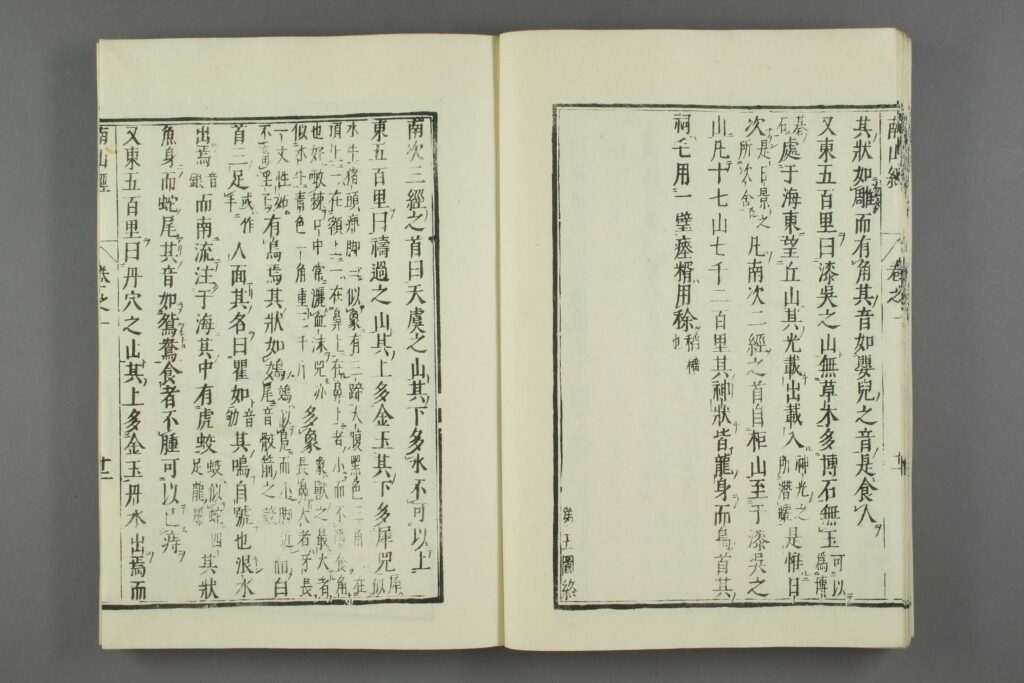





































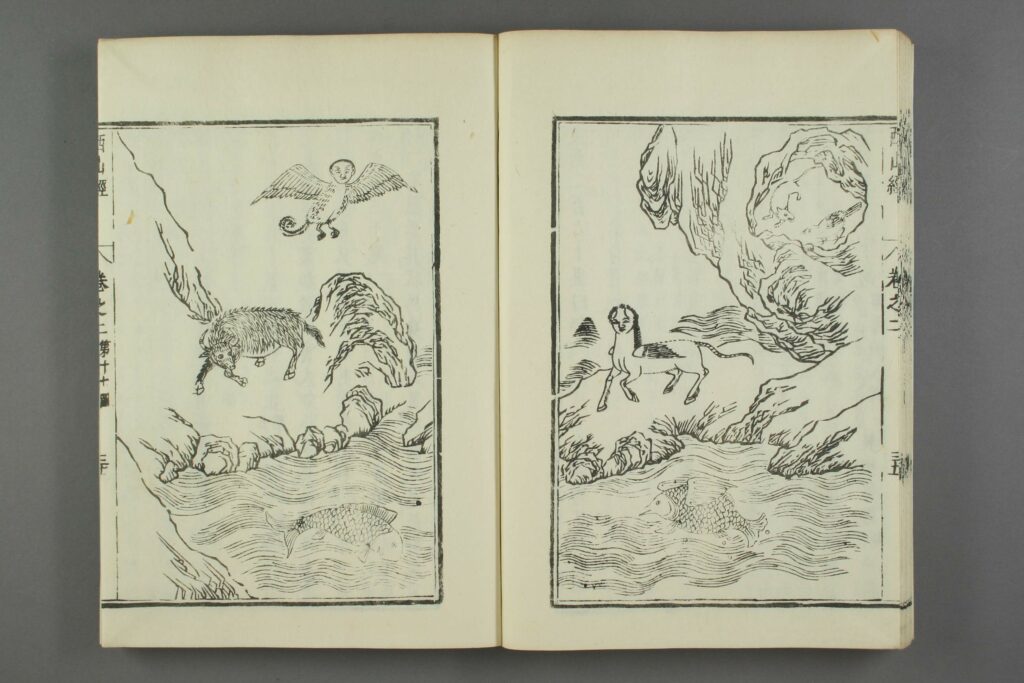































































































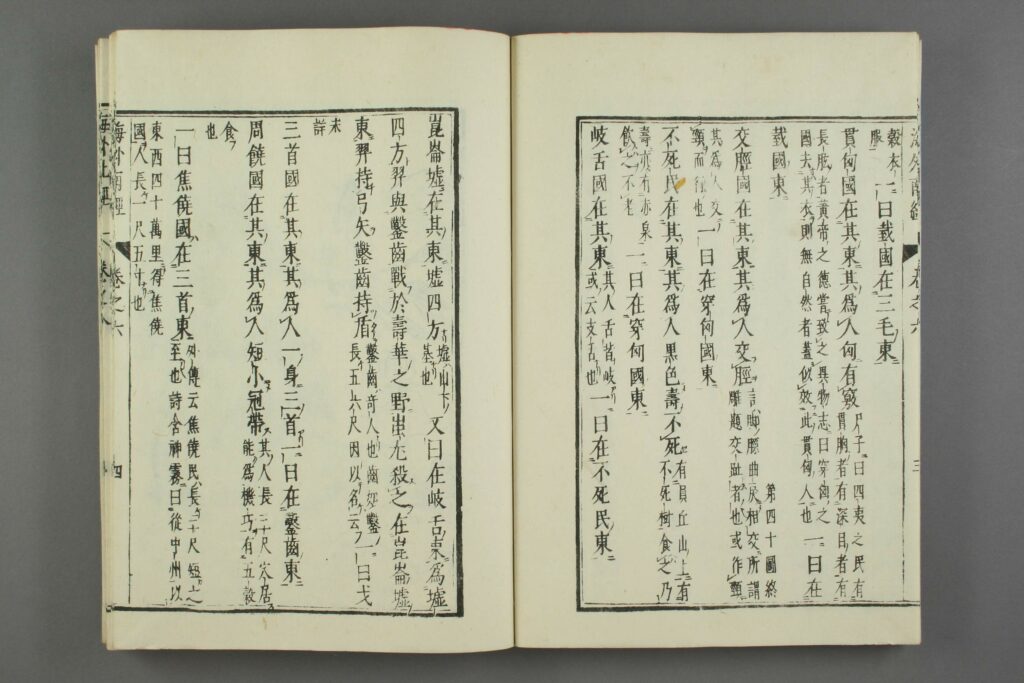



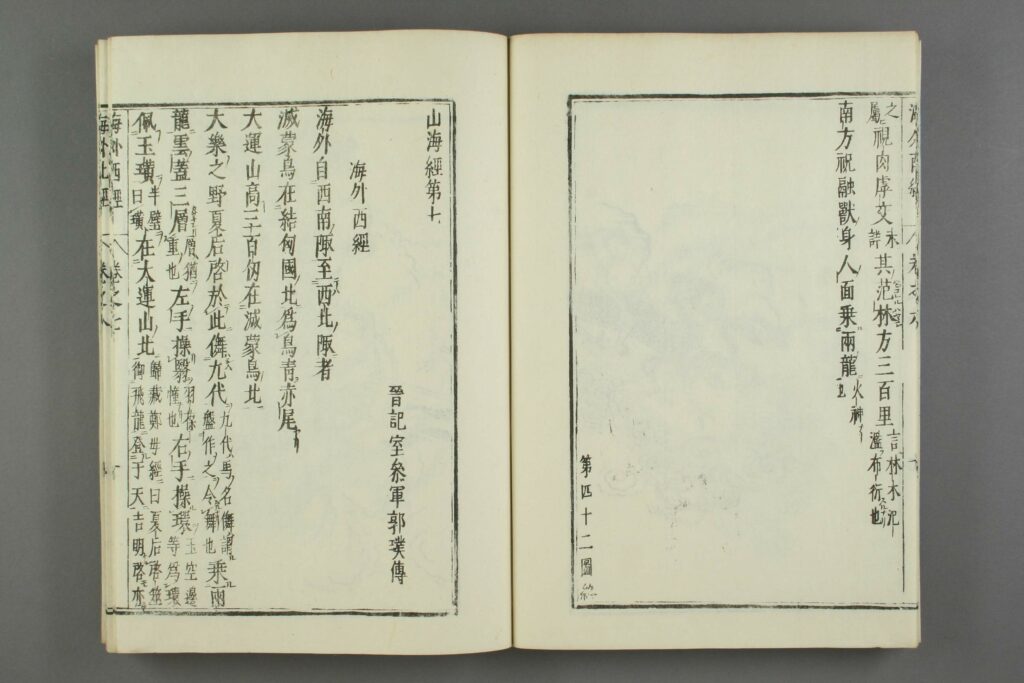




















































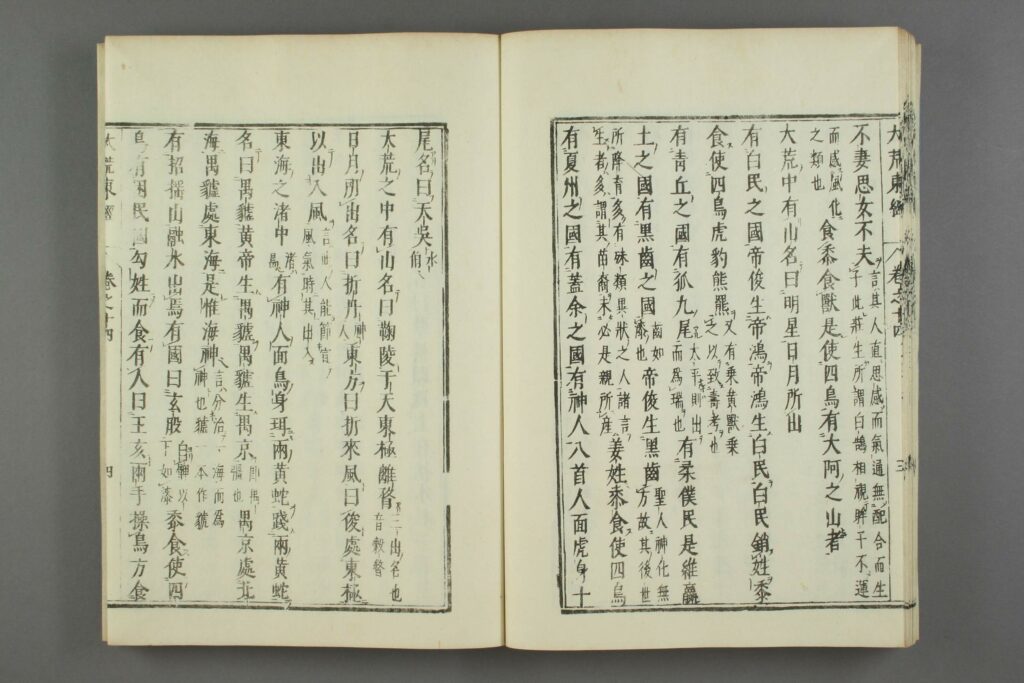
























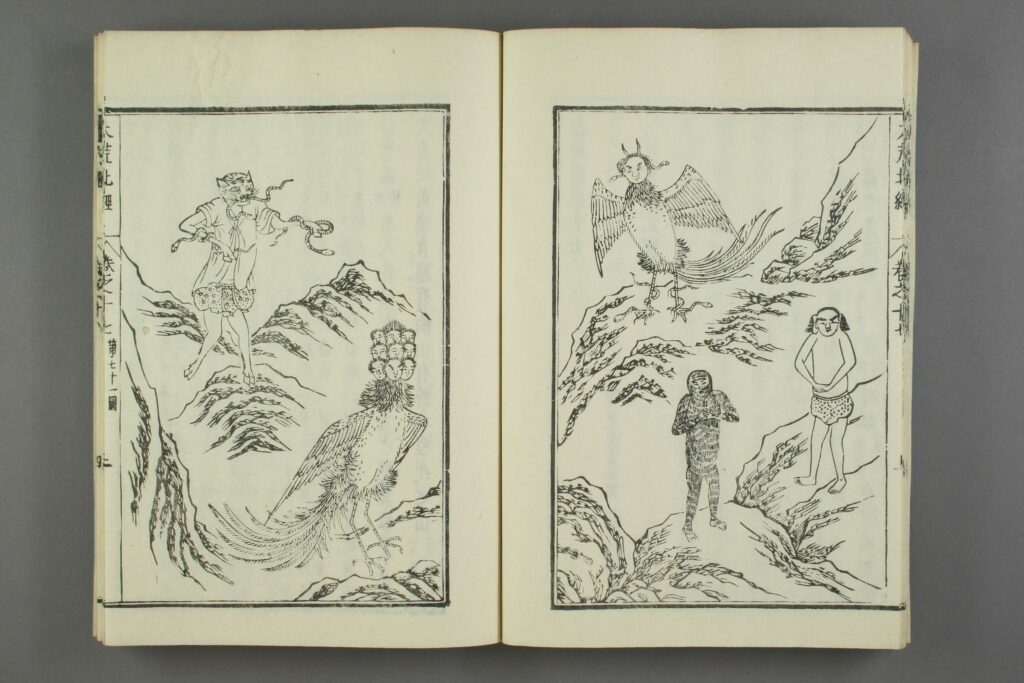








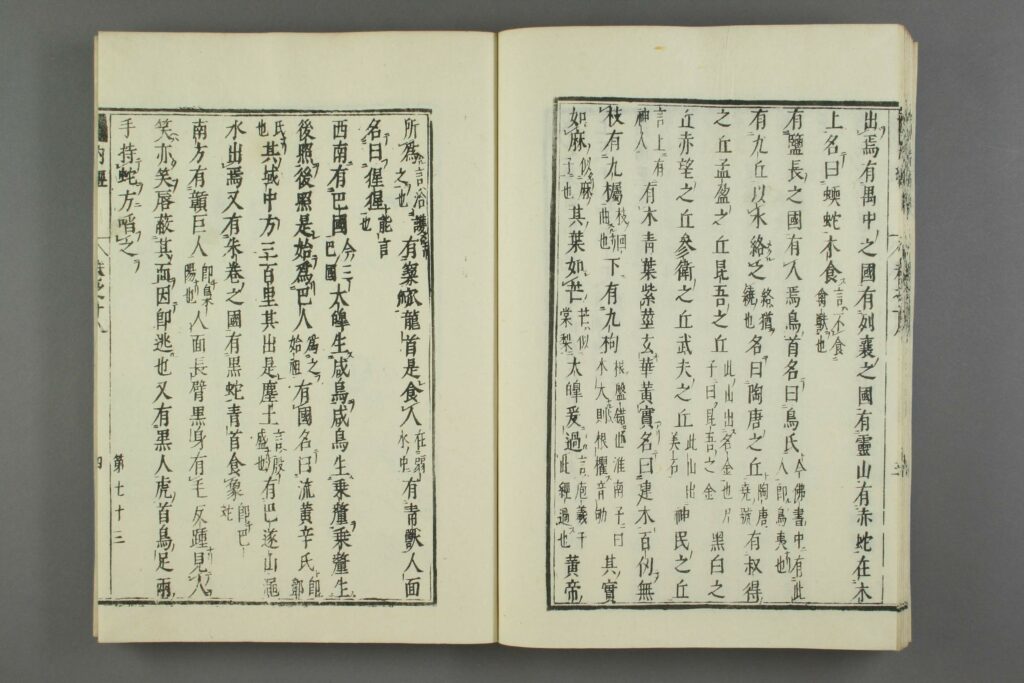




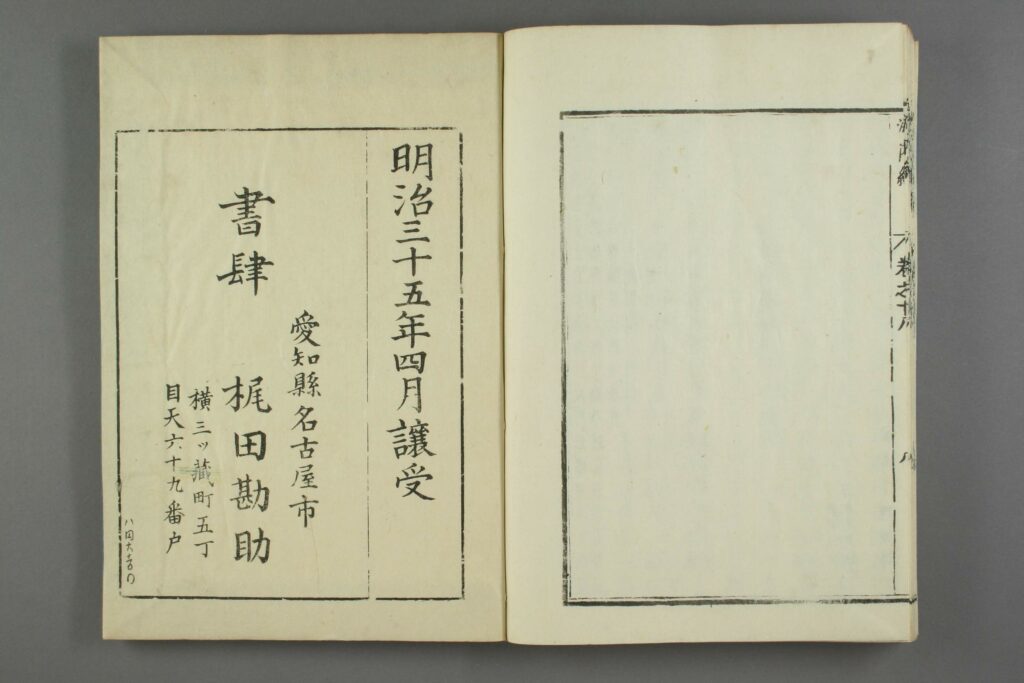

Culture文化 Masterpiece名著 256P 山海经.郭璞传.蒋应镐绘
历史上的今天 ( 7 ):
- 2024年-01月-10日:Memory记忆:Amsterdam, Netherlands 1948 荷兰阿姆斯特丹1948年 (2P)
- 2024年-01月-10日:Memory记忆:Europeans who settled in Shanghai in 1948 定居上海的欧洲人1948年 (7P)
- 2024年-01月-10日:Memory记忆:Beijing, China 1948 中国北平1948年 (239P)
- 2024年-01月-10日:Memory记忆:Macau, China 1948 中国澳门1948年 (8P)
- 2024年-01月-10日:Memory记忆:Nanjing, China, January 1947 中国南京1947年1月 (2P)
- 2024年-01月-10日:Memory记忆:Hong Kong, China 1947 中国香港1947年 (10P)
- 2024年-01月-10日:News新闻:2024年1月10日新闻简报(国内国际)
可点 ➠ 2023年-01月-10日 ➠ 148 s ➠ ♥ 0

